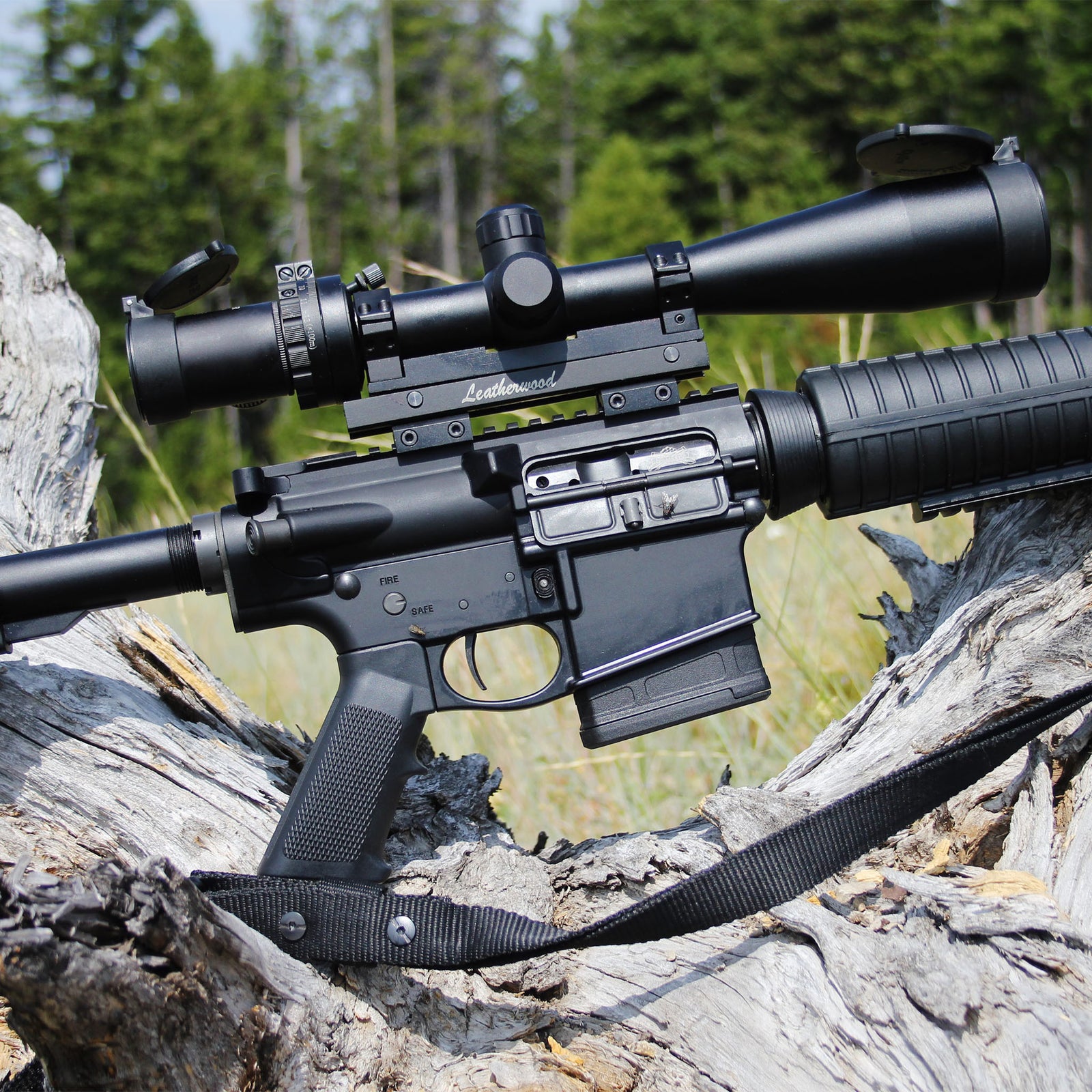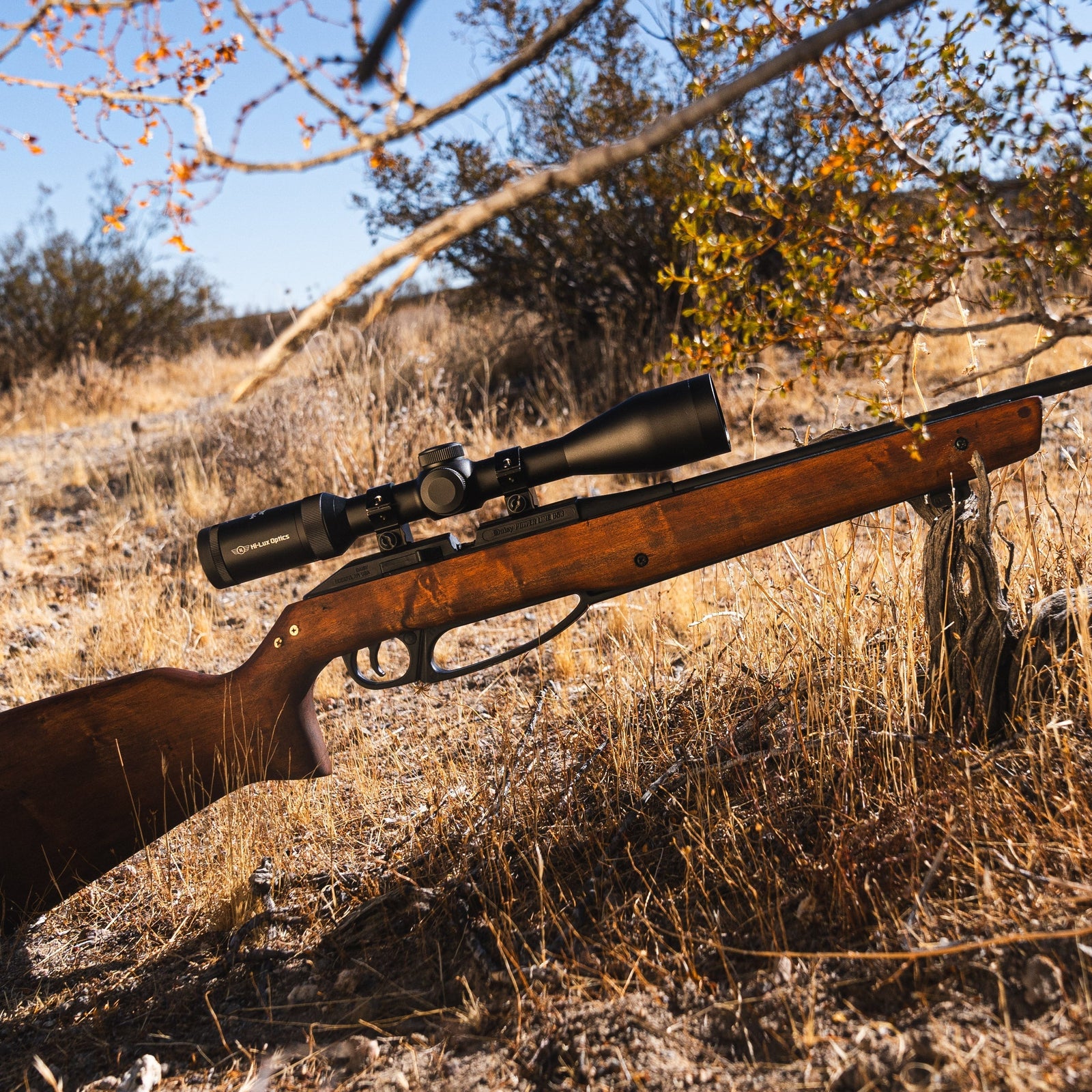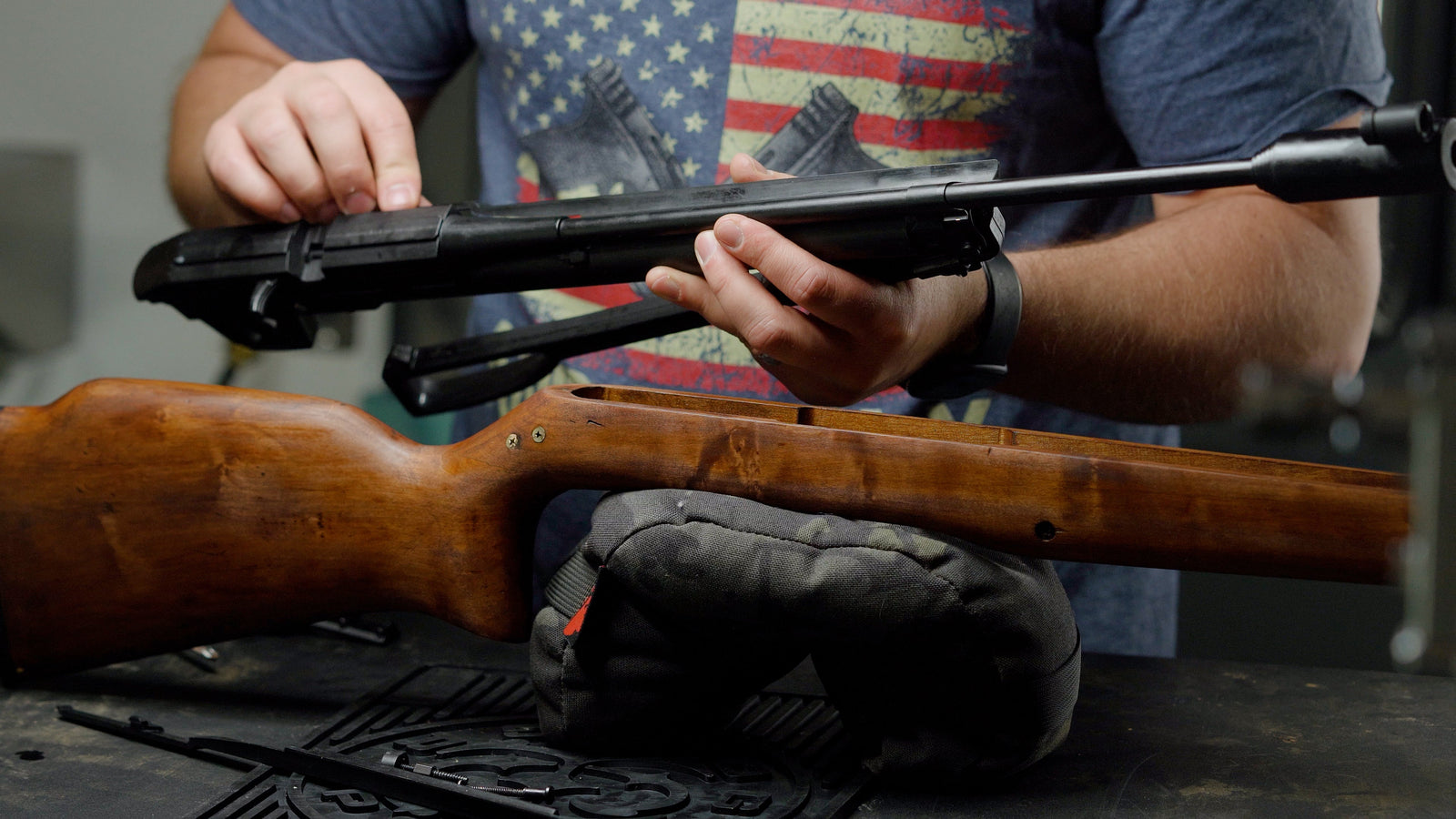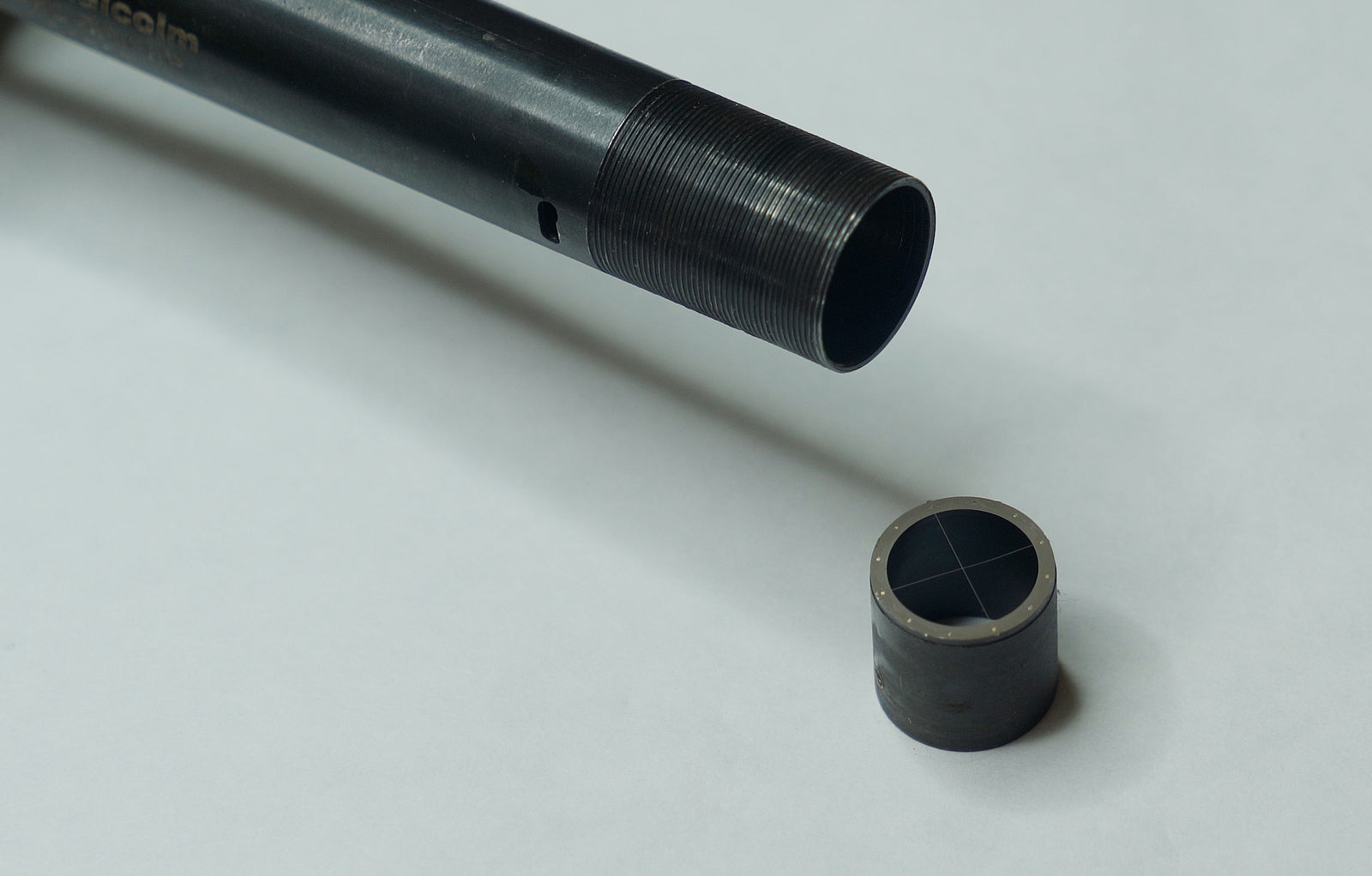The late Jim Leatherwood, who passed away in September 2007, became one of my dearest friends. Over a seven or eight year period, every February or March, I'd load up and leave the cold and snow of the Midwest to spend a week to ten days with Jim on his family's ranch in Texas. Early every morning, Jim would head for his shop to "tinker with" this or that scope project ... and I would head for the private range on the ranch to get in some shooting with whatever Jim had "tinkered with" the previous day. He would show up at the ranch's hunting camp, where the range was located, around 10 a.m. - and I'd fix us a good ol' country brunch. Through the day, we'd get in some bass fishing on the half-dozen lakes on the property, eat an early dinner, then go shoot some wild hogs. It was a great routine and a welcomed break from the colder weather 500 or so miles farther North. I learned a lot from Jim Leatherwood, especially about his ART (Auto Ranging & Trajectory) scope system, developed for Vietnam era military snipers. I did spend some time with him in his shop, during the early development of the more advanced M1000 ART scope, which also led to the development of the more recent M1200 XLR version of the scope.

What really sets the newer versions of the ART system apart from the military ART models of the 1960's is the cam system which automatically allows for the trajectory of the round being shot. Let's face it, the original ART scopes were set up to allow tactical shooters to keep hits on a man-sized target out to around 600 yards ... shooting rifles chambered for the U.S. military rifle cartridges of the time - the 5.56x45mm NATO (.223 Remington) and the 7.62x51mm NATO (.308 Winchester). The original 3-9x40mm Leatherwood ART scopes had very limited use with most other calibers and loads. Even the "Sporter" version of that scope offered during the 1990's , and the earliest version of the M1200 featured a cam system very similar to the cam system of the Vietnam era scopes. The new 2-10x M1000 and 6-24x M1200 XLR models feature an all new cam system ... which can now be calibrated for close to 90-percent of all factory loads for 90-percent of the commercial center-fire rifle cartridges currently available - and calibrating that cam to the ballistics of a rifle and load has never been easier. This fall will mark ten years since I have been able to spend time with my old friend, to shoot, fish and hunt with him on the ranch where he grew up ... and to joke around with at the SHOT Show ... in between some very serious discussions about scope design and construction.
For the 2017 fall hunting seasons, I will be honoring my good friend Jim Leatherwood by doing some of my hunting with a center-fire rifle topped with one of the M1200 XLR ART-model scopes. And that rifle is the heavy-barreled custom build .308 Winchester shown in the photos on this page. The rifle sports a 26-inch Shilen Match Grade barrel.
As shared in that earlier post on shooting this "Long Range" .308 Winchester rifle, a handload consisting of 45-grains of Accurate 2520 powder behind the Hornady 168-grain .308" diameter BTHP MATCH bullet has been a real tack driver out of this rifle. My earlier shooting was done with one of the great Hi-Lux Optics 7-30x50mm Top Angle Focus 30mm model scopes aboard - and when I have done my part, the rifle and load has consistently rewarded me with sub 1-inch hundred yard groups. Since writing that first piece on this .308 Long Range Rig, I've learned that the average velocity of the load being shot is 2,724 f.p.s. The bullet being shot has a .450 b.c. I had used one of the Hi-Lux Optics machined steel one-piece Max-Tac bases for the Savage Model 10, which made installing the Leatherwood M1200 XLR a snap. This Picatinny rail type base allowed the scope to be quickly set at my eye relief, then solidly attached by tightening the knurled nuts of the mounting bolts. Turning to the M1200 XLR manual, I went to the suggested cam settings to calibrate the ART system of this scope to the rifle and load. The closest I could find was for a .447 b.c. bullet at 2,750 f.p.s. (the Hornady factory ammo load for the .308 Winchester with the 165-grain GMX .308 diameter bullet).

WE WILL DETAIL CALIBRATING THE CAM IN "PART 2" OF THIS ARTICLE-REPORT SERIES...Coming in mid May! The cam-setting for a .447 b.c. bullet at 2,750 f.p.s. was "420". I figured the slightly higher .450 b.c. of the BTHP MATCH bullet, at just a bit slower velocity would "iron out" the difference. It took 6 shots to sight in the heavy-barreled .308 rifle and scope ... to print right at 1 1/2 inches above point of aim at 100 yards. Then letting the barrel fully cool, I went for my first group (again allowing the barrel to cool between shots) ... and that first three shot group punched with the rifle...load...and M1200 XLR scope (at 6x magnification) is shown here. Those three holes have a center-to-center spread of just .252-inch! Looks like a keeper ... doesn't it? When I do go for big game this fall with this rig ... sitting in a blind along the edge of a huge hayfield where shots can stretch out to over 600 yards, I would go to a more appropriate "hunting bullet" - the 168-grain Hornady .308" A-MAX. That bullet has a slightly higher .475 b.c., and may require re-calibrating the setting of the cam. Before hunting season, we will do some loading and shooting with the 168-grain A-MAX bullet, loaded with the same 45-grain charge of Accurate 2520 powder, which should produce basically the same velocity with the 168-grain BTHP MATCH bullet - which produced the groups shown here.

With the rifle, scope and load sighted 1 1/2-inches high at 100 yards, the combo prints pretty much "on" at 200 yards. By moving my portable shooting bench over onto a neighboring hay field, I was able to stretch my initial shooting out some. When sighting through the scope, the shooter will notice two "ranging grids" on the bottom half of the scope. One on the right is in meters ... the one on the left is in inches. See the two bold dark lines on the target board at left? They are exactly 18-inches apart. The top line represents the back line of a mature whitetail buck ... the bottom line represents the bottom of a mature whitetail buck's chest cavity. I simply zoomed in until the "top line" and "bottom line" fit perfectly in the 18-inch grid marking. Without even looking up to see the yardage shown on the rear of the cam arrangement, I held for center and squeezed off the shot. I gave the rifle a few mintues of cool down ... and shot again. Then, after the rifle cooled again, shot number three was squeezed off. All three hits were in the "9-Ring" ... and the range shown on the "ranging ring"of the Leatherwood Camputer system indicated the three shots had been right at 400 yards. Checking with a laser rangefinder gave 396 yards!

The center-to-center measurement of the spread went just 3.332". By "zooming in on" the target, until those two lines fit perfectly between the open space in the reticle, the cam of the M1200 XLR had precisely lifted the rear of the scope to allow for the trajectory, or bullet drop. of the load. Now, while this scope is designated the M1200 , since it can be calibrated for most center-fire rifles ... cartridges ... and loads to be able to keep hits in the "kill zone" all the way out to 1,200 yards ... in no way do I or Hi-Lux Optics want to encourage hunters to take shots at game beyond the effective game-taking range of the load being shot. As I pointed out earlier here in "Part 1" of this series on "Hunting With The Leatherwood M1200 ART Scope", when seasons get closer, and it's time to get ready for actually taking shots at game with this rifle and scope, I will make the switch to a more appropriate hunting bullet - the 168-grain Hornady A-MAX bullet. If this bullet will shoot at basically the same velocity (2,724 f.p.s.) as the 168-grain BTHP MATCH bullet used to punch the groups shared here, that means the load is good for roughly 2,770 foot-pounds of energy at the muzzle. Out at 400 yards, that .475 b.c. bullet would slow to around 1,920 f.p.s., and retain 1,377 f.p.e. At 600 yards, velocity would be in the neighborhood of 1,620 f.p.s., with around 975 foot pounds of retained energy. At 700 yards, the rifle and load would still be good for a little more than 1,500 f.p.s. - with close to 840 f.p.e. Somewhere around 750 yards, the bullet would run out of enough steam to generate the 800 f.p.e. that's widely accepted as the minimum needed for taking game the size of deer. So, for me, 600 yards is pretty much my personal maximum "hunting range" for the rifle and load ... even though the M1200 XLR would likely continue to keep hits in the "kill zone" all the way out to 1,200 yards. Each month, we will publish here on the Hi-Lux Precision Optics blog more info on using and tapping the effectiveness of the scope which is now the most advanced version of the Leatherwood ART system that has ever been available.
Toby Bridges, Leatherwood/Hi-Lux Optics





Jeff Snyder
September 22, 2019
Just started looking for new scope for a 300 Weatherby Mag. Shooting 180 gr. AccuBond Weatherby Factory Ammo, with a BC of 0.507. Will your M1200 and or M1000 work with that. I’m looking for one scope to do all, Around 1000 yards is as long as i will shoot.but how close will these two scopes clearly work.